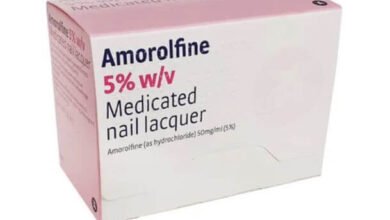Medicare Part D Plans 2025: A Comprehensive Guide to Prescription Drug Coverage

Medicare Part D is a program designed to provide prescription drug coverage for Medicare beneficiaries. If you are approaching retirement or already enrolled in Medicare, understanding how Medicare Part D Plans 2025 work is essential. This guide will walk you through the basics of these plans, their benefits, and how to choose the best one for your needs.
What Is Medicare Part D?
Medicare Part D is a federal program that helps cover the cost of prescription drugs. It was introduced in 2006 to ensure that Medicare beneficiaries could access affordable medications. The coverage is offered through private insurance companies approved by Medicare.
Who Can Enroll in Medicare Part D?
Anyone who is eligible for Medicare Part A or enrolled in Medicare Part B can sign up for a Medicare Part D plan. These plans are optional, but if you don’t enroll when you first become eligible, you might face a late enrollment penalty.
How Medicare Part D Works
Medicare Part D plans are offered by private insurers, so the specific details may vary between companies. However, most plans follow a standard structure:
- Monthly Premium – This is the amount you pay every month to stay enrolled in the plan.
- Annual Deductible – This is the amount you must pay out-of-pocket for your prescriptions before your plan begins to cover the costs.
- Copayments/Coinsurance – After meeting your deductible, you’ll either pay a fixed copayment or a percentage of the drug cost.
Coverage Stages in Medicare Part D
Medicare Part D plans have different stages of coverage that affect how much you’ll pay over the year:
- Initial Coverage Stage – After meeting your deductible, your plan covers most of the cost, but you’ll pay a copayment or coinsurance.
- Coverage Gap (Donut Hole) – After spending a certain amount on prescriptions, you’ll enter the coverage gap, where you may pay a higher share of the cost. In 2025, the coverage gap continues to close, meaning beneficiaries will pay no more than 25% of the cost for both brand-name and generic drugs.
- Catastrophic Coverage – Once you’ve spent enough to leave the coverage gap, you’ll enter the catastrophic coverage stage, where you’ll only pay a small amount for your drugs.
How to Choose the Right Medicare Part D Plan
Selecting a Medicare Part D plan depends on your specific needs. Here’s how to evaluate your options:
- Check the Drug Formulary – Each plan has a formulary, which is a list of covered drugs. Make sure the medications you take are included in the plan’s formulary.
- Compare Costs – Look at the monthly premium, deductible, and copayments to estimate how much you’ll spend throughout the year. Even if a plan has a low premium, higher out-of-pocket costs could make it more expensive overall.
- Pharmacy Network – Some plans may require you to use specific pharmacies to get the best prices. Ensure that your preferred pharmacy is included in the network.
- Customer Support – Consider the quality of customer service provided by the insurance company. You may need assistance with claims or coverage questions during the year.
Special Enrollment Periods for Medicare Part D
In most cases, you can only enroll in a Medicare Part D plan during specific enrollment periods:
- Initial Enrollment Period (IEP) – This is the seven-month period that starts three months before you turn 65 and ends three months after.
- Annual Enrollment Period (AEP) – From October 15 to December 7 each year, you can switch, drop, or enroll in a Medicare Part D plan.
- Special Enrollment Period (SEP) – If you have a qualifying life event, such as moving to a new state or losing other prescription coverage, you may qualify for a special enrollment period.
Penalty for Late Enrollment
If you don’t enroll in Medicare Part D when you’re first eligible and you don’t have other credible prescription drug coverage, you could face a late enrollment penalty. This penalty is added to your monthly premium for as long as you have Medicare Part D. To avoid this, it’s essential to sign up on time.
If your income is below a certain threshold, you may qualify for Extra Help, a program that assists with Medicare Part D costs, including premiums, deductibles, and copayments. You can apply for Extra Help through Social Security.
Conclusion
Choosing the right Medicare Part D plan can significantly impact your healthcare costs and access to necessary medications. Stay proactive in reviewing your plan each year to ensure you’re getting the best coverage for your prescriptions.







